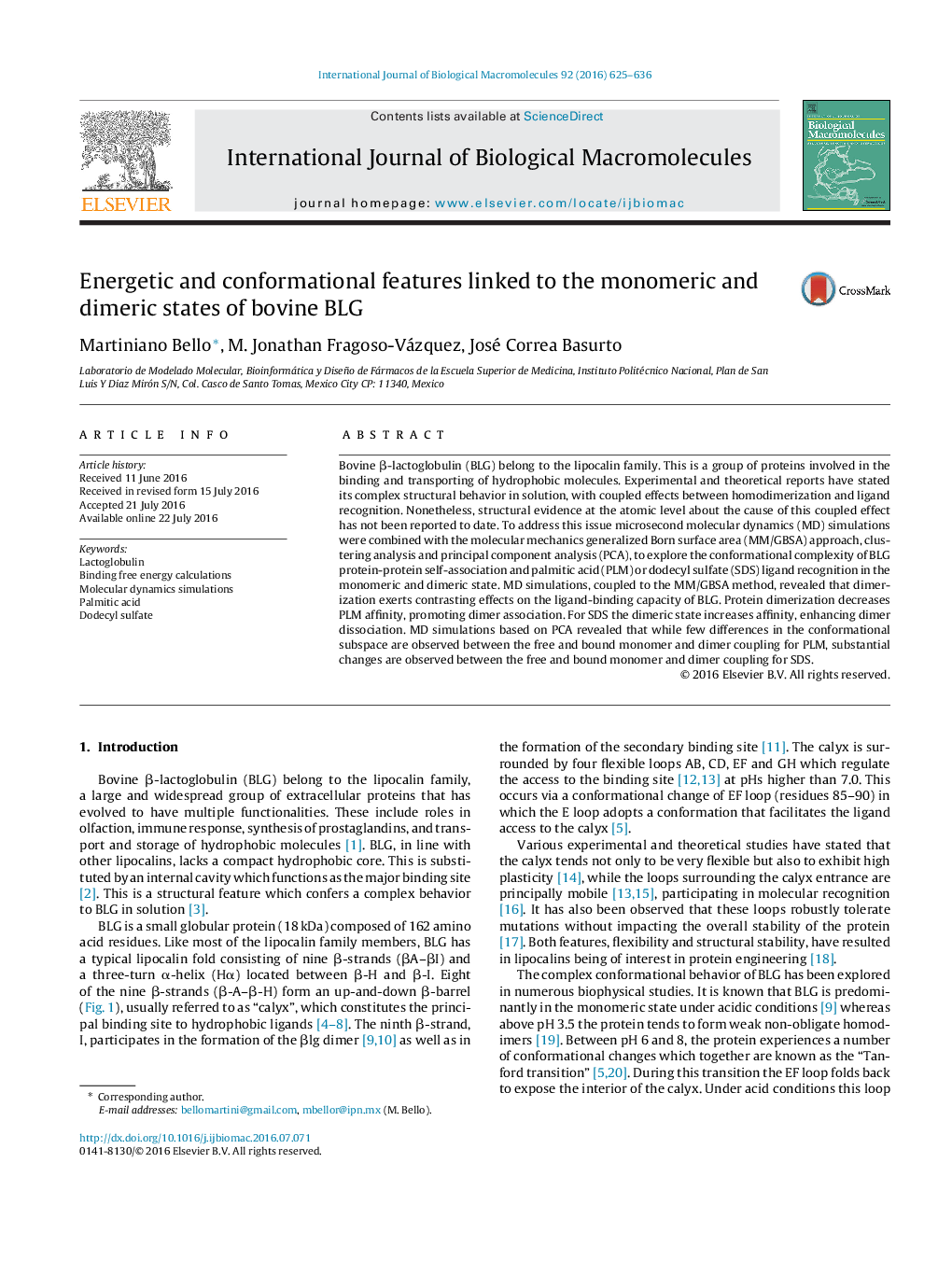| Article ID | Journal | Published Year | Pages | File Type |
|---|---|---|---|---|
| 8329732 | International Journal of Biological Macromolecules | 2016 | 12 Pages |
Abstract
Bovine β-lactoglobulin (BLG) belong to the lipocalin family. This is a group of proteins involved in the binding and transporting of hydrophobic molecules. Experimental and theoretical reports have stated its complex structural behavior in solution, with coupled effects between homodimerization and ligand recognition. Nonetheless, structural evidence at the atomic level about the cause of this coupled effect has not been reported to date. To address this issue microsecond molecular dynamics (MD) simulations were combined with the molecular mechanics generalized Born surface area (MM/GBSA) approach, clustering analysis and principal component analysis (PCA), to explore the conformational complexity of BLG protein-protein self-association and palmitic acid (PLM) or dodecyl sulfate (SDS) ligand recognition in the monomeric and dimeric state. MD simulations, coupled to the MM/GBSA method, revealed that dimerization exerts contrasting effects on the ligand-binding capacity of BLG. Protein dimerization decreases PLM affinity, promoting dimer association. For SDS the dimeric state increases affinity, enhancing dimer dissociation. MD simulations based on PCA revealed that while few differences in the conformational subspace are observed between the free and bound monomer and dimer coupling for PLM, substantial changes are observed between the free and bound monomer and dimer coupling for SDS.
Keywords
Related Topics
Life Sciences
Biochemistry, Genetics and Molecular Biology
Biochemistry
Authors
Martiniano Bello, M. Jonathan Fragoso-Vázquez, José Correa Basurto,
